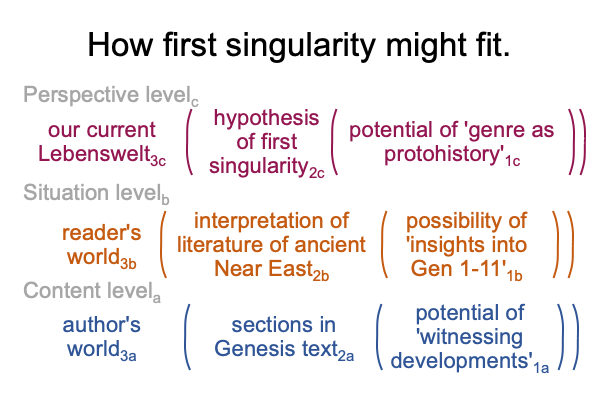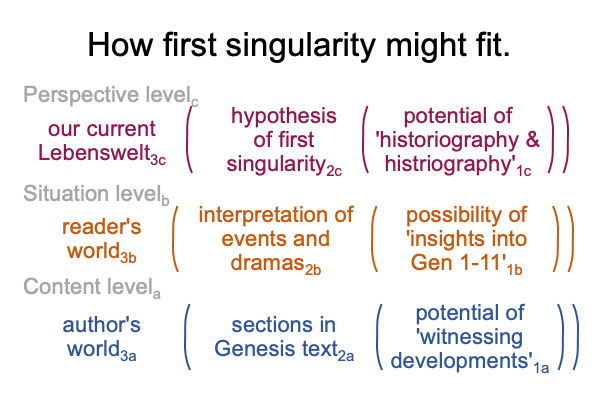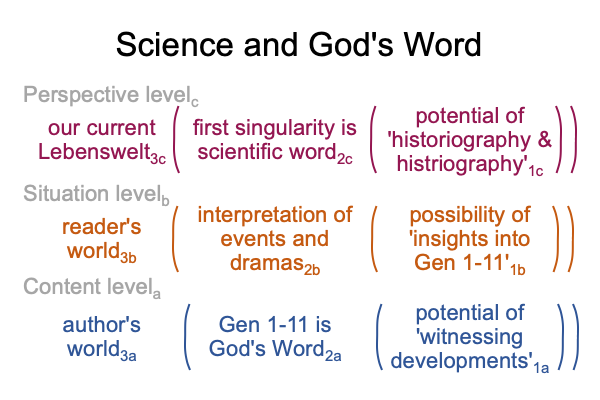Looking at the Book (2015) Genesis: History, Fiction or Neither? (Part 24 of 38)
0083 Gordon Wenham asks (more or less), “Can we think of Gen 1-11 as a genealogy, adorned with narratives?”
The literature of the ancient Near East offers parallels. The Sumerian King List directly compares to Biblical genealogies. Other writings of the ancient Near East coincide with Biblical narratives.
0084 For example, the Sumerian Flood Story is similar to Noah’s Flood Story. In terms of content, they refer to an identical prehistoric event.
0085 Yes, this fits Wenham’s overall label of “protohistory” for Gen 1-11.
I return to the virtual nested form in the realm of possibility, found in day 20 of this series.
protohistory1c( insights for reader1b( Biblical witness1a)
There is an advantage to Wenham’s term, “protohistory”. It expands the field of inquiry to include all discovered written origin myths of the ancient Near East.
0086 From my point of view, the discovery of these extra-Biblical materials is nothing short of miraculous.
These writings are preserved as cuneiform inscriptions on clay tablets, fired into bricks with the immolation of a royal library, and buried in ruins for thousands of years. Only after Western archaeologists recover tablets and clever people figure out ways to translate them, do these stories come back to life.
0087 Who knows about these tablets?
At the time when the Babylonian exile ends and the Pentateuch takes final form, no one knows about these tablets.
At the time of Christ, no one knows about these buried tablets.
The same goes for Augustine of Hippo and Thomas Aquinas.
It is as if God concealed these tablets for the modern West to discover, in the Age of Ideas, after the successful birth of science.



